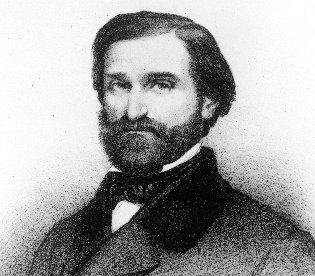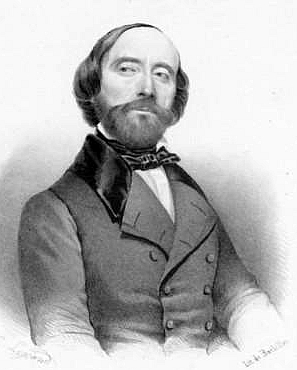|
Richard Fredricks
Richard Fredricks (born August 15, 1933, Los Angeles, California) is an American opera singer, and was one of the leading dramatic baritones of both the New York City Opera and the Metropolitan Opera. He has also appeared on network television, performing a number of times on NBC's ''The Tonight Show'' and guest-starred once in a 1971 episode of ABC's ''The Odd Couple''. New York City Opera Fredricks debuted with the New York City Opera on October 1, 1960 as Schaunard in ''La bohème'', with Chester Ludgin and Norman Treigle in the cast. He went on to perform leading baritone roles in ''The Consul'' (with Patricia Neway), ''Le nozze di Figaro'' (as Count Almaviva), ''The Ballad of Baby Doe'' (as Horace Tabor), ''Lizzie Borden'' (as Captain Jason MacFarlane, in the world premiere of Beeson's opera), ''Carmen'' (as Escamillo), ''Tosca'' (as Baron Scarpia, with Plácido Domingo), ''Cavalleria rusticana'' (as Alfio), ''Manon'' (as Lescaut, with Beverly Sills, conducted by Julius Ru ... [...More Info...] [...Related Items...] OR: [Wikipedia] [Google] [Baidu] |
Los Angeles, California
Los Angeles, often referred to by its initials L.A., is the List of municipalities in California, most populous city in the U.S. state of California, and the commercial, Financial District, Los Angeles, financial, and Culture of Los Angeles, cultural center of Southern California. With an estimated 3,878,704 residents within the city limits , it is the List of United States cities by population, second-most populous in the United States, behind only New York City. Los Angeles has an Ethnic groups in Los Angeles, ethnically and culturally diverse population, and is the principal city of a Metropolitan statistical areas, metropolitan area of 12.9 million people (2024). Greater Los Angeles, a combined statistical area that includes the Los Angeles and Riverside–San Bernardino metropolitan areas, is a sprawling metropolis of over 18.5 million residents. The majority of the city proper lies in Los Angeles Basin, a basin in Southern California adjacent to the Pacific Ocean in the ... [...More Info...] [...Related Items...] OR: [Wikipedia] [Google] [Baidu] |
Cavalleria Rusticana
''Cavalleria rusticana'' (; ) is an opera in one act by Pietro Mascagni to an Italian libretto by Giovanni Targioni-Tozzetti and Guido Menasci, adapted from an 1880 Cavalleria rusticana (short story), short story of the same name and subsequent play by Giovanni Verga. Considered one of the classic ''verismo'' operas, it premiered on 17 May 1890 at the Teatro dell'Opera di Roma, Teatro Costanzi in Rome. Since 1893 in music, 1893, it has often been performed in a so-called ''Cav/Pag'' double-bill with ''Pagliacci'' by Ruggero Leoncavallo. Composition history In July 1888 the Milanese music publisher Edoardo Sonzogno announced a competition open to all young Italian composers who had not yet had an opera performed on stage. They were invited to submit a one-act opera which would be judged by a jury of five prominent Italian critics and composers. The best three would be staged in Rome at Sonzogno's expense. Mascagni heard about the competition only two months before the closing da ... [...More Info...] [...Related Items...] OR: [Wikipedia] [Google] [Baidu] |
Don Giovanni
''Don Giovanni'' (; K. 527; full title: , literally ''The Rake Punished, or Don Giovanni'') is an opera in two acts with music by Wolfgang Amadeus Mozart to an Italian libretto by Lorenzo Da Ponte. Its subject is a centuries-old Spanish legend about a libertine as told by playwright Tirso de Molina in his 1630 play '' El burlador de Sevilla y convidado de piedra''. It is a ''dramma giocoso'' blending comedy, melodrama and supernatural elements (although the composer entered it into his catalogue simply as ''opera buffa''). It was premiered by the Prague Italian opera at the National Theatre (of Bohemia), now called the Estates Theatre, on 29 October 1787. ''Don Giovanni'' is regarded as one of the greatest operas of all time and has proved a fruitful subject for commentary in its own right; critic Fiona Maddocks has described it as one of Mozart's "trio of masterpieces with librettos by Da Ponte". Composition and premiere The opera was commissioned after the success of ... [...More Info...] [...Related Items...] OR: [Wikipedia] [Google] [Baidu] |
Rigoletto
''Rigoletto'' is an opera in three acts by Giuseppe Verdi. The Italian libretto was written by Francesco Maria Piave based on the 1832 play '' Le roi s'amuse'' by Victor Hugo. Despite serious initial problems with the Austrian censors who had control over northern Italian theatres at the time, the opera had a triumphant premiere at La Fenice in Venice on 11 March 1851. The work, Verdi's sixteenth in the genre, is widely considered to be the first of the operatic masterpieces of Verdi's middle-to-late career. Its tragic story revolves around the licentious Duke of Mantua, his hunch-backed court jester Rigoletto, and Rigoletto's daughter Gilda. The opera's original title, ''La maledizione'' (The Curse), refers to a curse placed on both the Duke and Rigoletto by the Count Monterone, whose daughter the Duke has seduced with Rigoletto's encouragement. The curse comes to fruition when Gilda falls in love with the Duke and sacrifices her life to save him from the assassin hired by he ... [...More Info...] [...Related Items...] OR: [Wikipedia] [Google] [Baidu] |
Maria Stuarda
''Maria Stuarda'' (Mary Stuart) is a tragic opera (''tragedia lirica''), in two acts, by Gaetano Donizetti, to a libretto by Giuseppe Bardari, based on Andrea Maffei's translation of Friedrich Schiller's 1800 play '' Maria Stuart''. The opera is one of a number of operas by Donizetti which deal with the Tudor period in English history, including '' Anna Bolena'' (named for Henry VIII's second wife, Anne Boleyn), '' Roberto Devereux'' (named for a putative lover of Queen Elizabeth I of England) and '' Il castello di Kenilworth''. The lead female characters of the operas ''Anna Bolena'', ''Maria Stuarda'', and ''Roberto Devereux'' are often referred to as the "Three Donizetti Queens". The story is loosely based on the lives of Mary, Queen of Scots (Mary Stuart) and her cousin Queen Elizabeth I. Schiller had invented the confrontation of the two Queens, who in fact never met.Ashbrook 1972, pp. 17 to 30. After a series of problems surrounding its presentation in Naples after the ... [...More Info...] [...Related Items...] OR: [Wikipedia] [Google] [Baidu] |
The Barber Of Seville
''The Barber of Seville, or The Useless Precaution'' ( ) is an ''opera buffa'' (comic opera) in two acts composed by Gioachino Rossini with an Italian libretto by Cesare Sterbini. The libretto was based on Pierre Beaumarchais's French comedy '' The Barber of Seville'' (1775). The premiere of Rossini's opera (under the title ''Almaviva, o sia L'inutile precauzione'') took place on 20 February 1816 at the Teatro Argentina, Rome, with designs by Angelo Toselli. Rossini's ''Barber of Seville'' is considered to be one of the greatest masterpieces of comedy within music, and has been described as the opera buffa of all "opere buffe". After two centuries, it remains a popular work. Composition history Rossini's opera recounts the events of the first of the three plays by French playwright Pierre Beaumarchais that revolve around the clever and enterprising character named Figaro, the barber of the title. Mozart's opera '' The Marriage of Figaro,'' composed 30 years earlier in 178 ... [...More Info...] [...Related Items...] OR: [Wikipedia] [Google] [Baidu] |
La Cenerentola
("Cinderella, or Goodness Triumphant") is an operatic in two acts by Gioachino Rossini. The libretto was written by Jacopo Ferretti, based on the libretti written by Charles-Guillaume Étienne for the opera '' Cendrillon'' with music by Nicolas Isouard (first performed Paris, 1810) and by Francesco Fiorini for with music by Stefano Pavesi (first performed Milan, 1814). All these operas are versions of the fairy tale '' Cendrillon'' by Charles Perrault. Rossini's opera was first performed in Rome's Teatro Valle on 25 January 1817. In this variation of the fairy tale, the wicked stepmother is replaced by a stepfather, Don Magnifico. The Fairy Godmother is replaced by Alidoro, a philosopher and tutor to the Prince. Cinderella is identified not by a glass slipper but by her silver ring. The supernatural elements that traditionally characterize the Cinderella story were removed from the libretto simply for ease of staging. Rossini composed when he was 25 years old, following t ... [...More Info...] [...Related Items...] OR: [Wikipedia] [Google] [Baidu] |
Roberto Devereux
''Roberto Devereux'' (in full , ; "Robert Devereux, or the Earl of Essex") is an 1837 (tragic opera) in three acts by Gaetano Donizetti. The opera is loosely based on the life of Robert Devereux, 2nd Earl of Essex, an influential member of the court of Queen Elizabeth I of England. Salvadore Cammarano wrote the Italian-language libretto based on François Ancelot's French tragedy (Paris, 1832), with some of the text taken from Felice Romani's libretto for Saverio Mercadante's opera ''Il conte d'Essex'' (Milan, 1833), also based on Ancelot's play. Cammarano's libretto also incorporated elements from the 1787 French play (1787) by Jacques Lescène des Maisons. Devereux was the subject of at least two earlier French plays, both titled : one in 1638 by Gauthier de Costes, seigneur de la Calprenède, and one in 1678 by Thomas Corneille. It is one of a number of operas by Donizetti which deal with the Tudor period of English history and which include ''Anna Bolena'' (about Anne ... [...More Info...] [...Related Items...] OR: [Wikipedia] [Google] [Baidu] |
L'heure Espagnole
''L'heure espagnole'' is a French one-act opera from 1911, described as a ''comédie musicale'', with music by Maurice Ravel to a French libretto by Franc-Nohain, based on Franc-Nohain's 1904 play ('comédie-bouffe') of the same name The opera, set in Spain in the 18th century, is about a clockmaker whose unfaithful wife attempts to make love to several different men while he is away, leading to them hiding in, and eventually getting stuck in, her husband's clocks. The title can be translated literally as "The Spanish Hour", but the word "heure" also means "time" – "Spanish Time", with the connotation "How They Keep Time in Spain". The original play had first been performed at the Théâtre de l'Odéon on 28 October 1904. Ravel began working on the music as early as 1907, and the opera was first performed at the Opéra-Comique on 19 May 1911. Performance history Ravel was closely involved in every aspect of the production as it was prepared for its premiere by the Opéra-Comiq ... [...More Info...] [...Related Items...] OR: [Wikipedia] [Google] [Baidu] |
Lucia Di Lammermoor
''Lucia di Lammermoor'' () is a (tragic opera) in three acts by Italian composer Gaetano Donizetti. Salvadore Cammarano wrote the Italian-language libretto loosely based upon Sir Walter Scott's 1819 historical novel '' The Bride of Lammermoor''. Donizetti wrote ''Lucia di Lammermoor'' in 1835, when he was reaching the peak of his reputation as an opera composer. Gioachino Rossini had recently retired and Vincenzo Bellini had died shortly before the premiere of ''Lucia'' leaving Donizetti as "the sole reigning genius of Italian opera".Mackerras, p. 29 Not only were conditions ripe for Donizetti's success as a composer, but there was also a widespread interest in the history and culture of Scotland. The perceived romance of its violent wars and feuds, as well as its folklore and mythology, intrigued 19th century readers and audiences. Walter Scott dramatized these elements in his novel ''The Bride of Lammermoor'', which inspired several musical works including ''Lucia''.Mackerras, ... [...More Info...] [...Related Items...] OR: [Wikipedia] [Google] [Baidu] |






